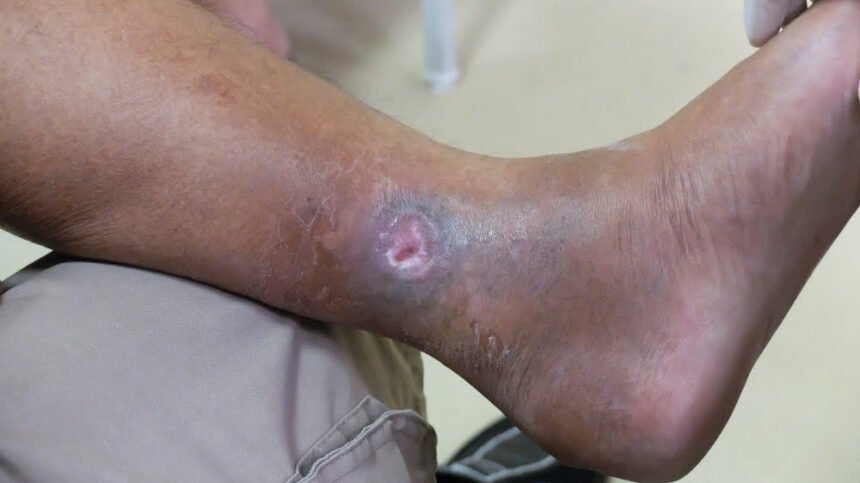Venous ulcers are open sores that often occur in the legs. Like varicose veins and spider veins, this condition also happens when there are problems with the blood flow in your leg veins. This is a problem that many people have never heard of, even though around 1% of the population suffers from it.
In Northern Europe and the United States, venous ulcers are especially considered a common chronic problem. That is why it is no longer surprising why there are so many vein doctors from big cities like New York to quaint areas like the vein clinic in Fort Worth. These clinics have become the go-to of these patients when it comes to treating their ulcers as well as preventing them.
So to help you truly understand what venous ulcers are, we discussed what it is, what causes them, and how it is treated.
What are venous ulcers?
As mentioned earlier, the most common and simplest definition of venous ulcers is that it is open sores that appear in your legs. Think of it as an open wound. Rather than heal and close like they normally do, they remain open and without the scab.
If your bodily function is working effectively, then it would simply be like a normal wound that closes eventually. However, since there are disruptions in your venous system and your legs are not pushing blood back to your heart, complications like ulcers start to arise.
It is also worth noting that venous ulcers are included in the CEAP classification used by doctors and specialists to determine the severity of a venous disease. Though the classification is not a static classification nor should be considered as disease progression, you should still keep in mind that out of the six classifications, two are for venous ulcers with one being the worst out of all the six. The two mentioned classifications are (1) healed venous ulcers and (2) active venous ulcers.
Active venous ulcer is the worst one out of the six because it is often accompanied by other symptoms aside from its unpleasant appearance. These symptoms can range from swollen ankles, discoloration or hyperpigmentation, leg pain, soreness, itchiness, tingling, and many more.
What causes it?
The leading cause of ulcers is venous insufficiency. This happens when you have too much pressure in the veins of your leg which in turn keeps your blood from flowing.
According to UK’s National Health Service, here are the risk factors that make you more susceptible to venous ulcers
- Excessive Weight
- Difficulty in Walking
- Previous condition of deep vein thrombosis
- Varicose veins
- Injury
- Surgery effects
- Increasing Age
When you look at some of these factors, some are just completely unavoidable such as increasing age. So to get them treated and prevent them from worsening, let us now discuss some of the treatments available for venous ulcers.
Treatment for Venous ulcers
When left untreated, ulcers can worsen and quickly become infected. This, in turn, can be the cause of your gangrene or leg amputation.
With that, here are the most popular treatments and remedies for venous ulcers.
Compression Stockings
Patients with venous insufficiency are already familiar with compression stockings. It is a common venous disease treatment that helps blood circulation and reduces swelling. Compression stockings can either be used to prevent ulcers or they can be used as a supportive treatment that can help speed up the healing process of your existing ulcer.
Unna Boots
Remember that an ulcer is like an open wound, so you have to treat it like one as well. That said, you can use Unna boots over normal plasters. This way, it can form a snug boot on your leg, which can help improve blood flow, fast-tracking the healing process.
Hydrocolloid Dressings
It is a special bandage that keeps the liquid, viruses, and bacteria out from the wound. What makes this dressing extra special is that it has a much breathable outer layer as well as an absorbable inner layer to drain the wound. Hydrocolloid dressings are also considered a debridement therapy because they also remove dead tissue as well.
Debridement
It is a surgical therapy that can either be an open procedure or a catheter-based intervention. Patients only need to undergo this surgery if their wounds become infected. Oftentimes, you can easily notice that there is persistent drainage from the wound or when you have a fever. These are often the heeding signs that you should go to the doctor and consult about debridement.
Treating Venous Ulcers Must Be a Top Priority
There are a lot of health issues that can affect our legs. Venous ulcers are one of the biggest issues. Fortunately, there are ways to mitigate these risks. This is just one of the many ways that the future of mobility is improving.

